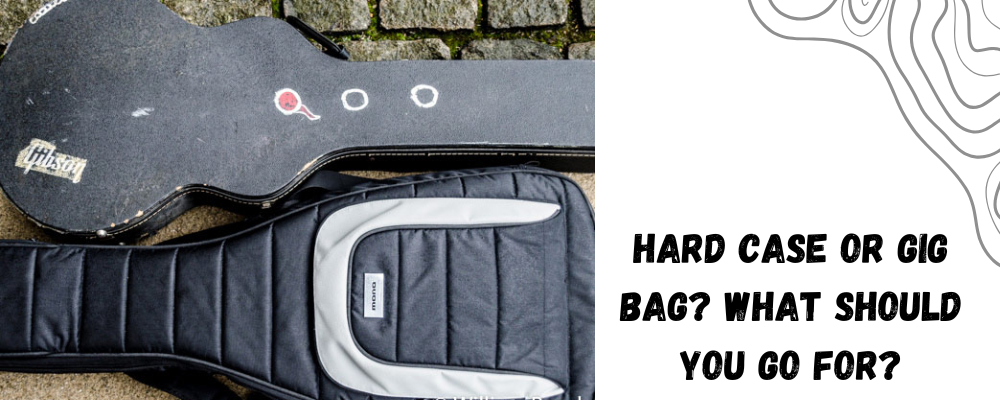Traveling with Your Guitar: Tips to Keep It Safe

Traveling with your guitar requires a smart game plan. Guitar Tech Genius advises loosening the strings to relieve neck tension from shifting air pressure and using a sturdy hard-shell case to shield your instrument from impact and weather changes.
Packing soft items like t-shirts or towels around the headstock adds essential padding, while checking airline rules upfront helps avoid surprises. These simple yet effective steps can mean the difference between arriving with a safe guitar — or heartbreak.
No use mincing words about it, it can be a pain in the neck to carry your guitar on the road. Your guitar takes a beating whether you are flying, taking a road trip to a concert, or simply strapping it in your vehicle to rehearse. However, the thing is that with some preparation and the proper equipment, it can be the difference between a pleasant ride and a catastrophe in question..
Pick the Right Armor: Flight Cases vs. Gig Bags
Hard Flight Cases: The Heavy Hitters
A hard flight case is your new best friend in case you want to be calm. These hardy boxes absorb the hardest blows, crushes, and the rough tossing of baggage handlers of airlines without a blink. They are heavy and thick, but they are well worth the extra weight when you have a guitar you are not merely playing with, but are playing with your main battleaxe.
Get one that has strong latches, a comfortable padded interior that fits the shape of your guitar, and perhaps some TSA-approved locks in case you are going to fly. It is the difference between your baby being brought back in one piece or being like a war zone.

Gig Bags: Lightweight and Practical
Playing the short trip game? Plush padded gig bags or travel-specific soft cases do the job for car rides, buses, and quick hand-carried flights. Some have reinforced sides and good water resistance, which adds extra insurance for your daily hustle.
But remember—they won’t protect you from the devil-may-care handling luggage gets on a plane’s cargo hold. Treat gig bags like a shield for careful, in-hand transport, not a blunt-force weapon.
Prep Your Guitar Like a Pro
Here’s the checklist before you hit the road:
Loosen those strings a notch or two. Pressure and temperature changes can warp necks or pull tuning out of whack. A subtle slack takes the edge off and prevents nasty surprises.
Control moisture. Guitars love consistent humidity—too dry or too wet is trouble. Use a travel humidifier pouch if you’re heading into a dry climate or winter grime.
Tie down or remove loose parts. Anything that can rattle—hangers, strap locks, cables—get them out of the way or strapped tight.
Taking these simple steps will save you serious headaches later.
The Do’s and Don’ts of Handling Your Guitar On-the-Go
Flying? Carry-On or Checked?
If you can, carry your guitar on board. Airlines differ, but bringing your guitar in as hand luggage vastly decreases damage risk. Show up early, be polite but firm with gate agents, explain your guitar’s delicate nature, and get it stowed safely.

When checking your guitar, double-check your hard case latches, add some extra padding inside, and clearly mark your contact info. Don’t just trust it’s invisible—assume worst-case handling.
Road Trips and Rides
Don’t toss your guitar in the trunk like a random bag. Secure it upright or flat with padding—most cases have little straps or compartments you can use to keep your guitar snug. Avoid drastic temperature swings, and never leave your guitar alone in hot cars.
Extra Tips From The Road
Foam neck support or folded shirts inside case: This keeps your neck anchored and avoids any internal bouncing.
Label your case with your info: Especially useful for checked luggage or oversize items.
Insurance: Not sexy, but seriously consider it if your guitar’s worth saving.
Keep essentials handy: Tuners, cables, picks in separate bags or compartments prevent opening your guitar case repeatedly.
Bottom Line
It is more careful to carry your guitar than just to drop it into any bag. Keep it safe with the appropriate case or bag, pack it before travel, and treat it with care. You may be flying across the world or to the studio in the city, but these guitar travel tips will ensure that your instrument remains safe and is there when you need it.
Nothing kills the momentum like broken strings, or, still worse, damage to your axe.









